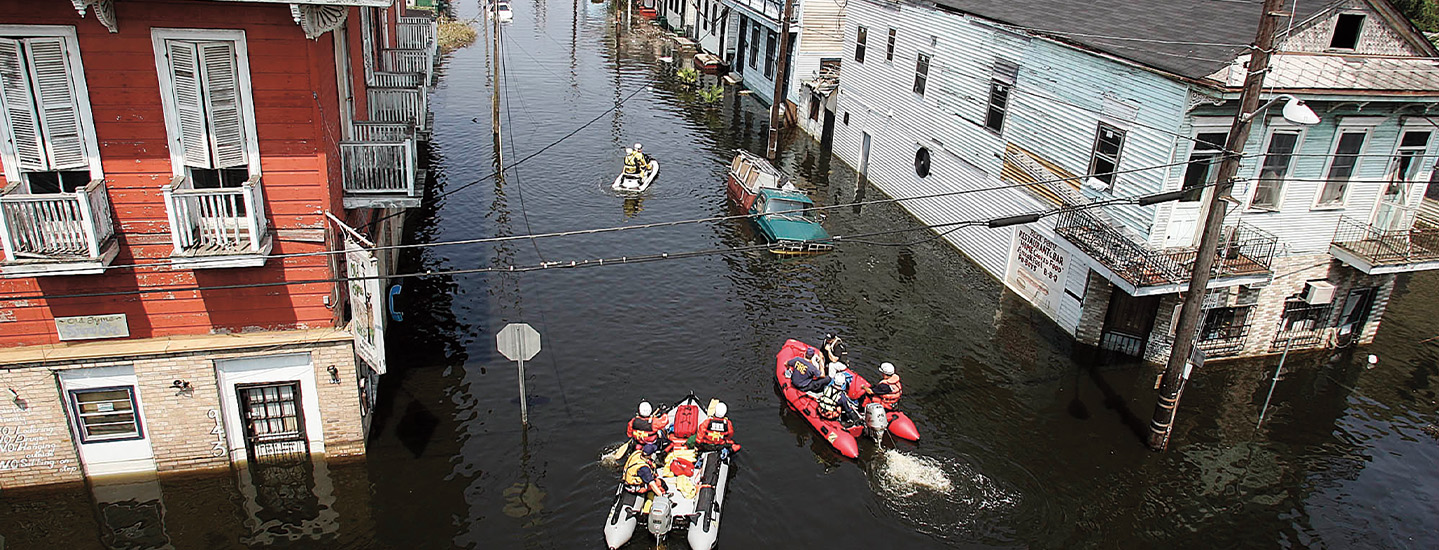Few people who experienced Hurricane Katrina will ever forget it. The August 2005 storm was one of the most destructive natural disasters in U.S. history. Its heavy rains and wind speeds of up to 175 miles per hour devastated states along the Gulf of Mexico. Dramatic news footage revealed people stranded on roofs, fleeing the churning waters below.
Katrina resulted in more than 1,800 deaths and displaced more than 1 million people. It also caused more than $160 billion in damage.
Afterward, officials faced a stark reality—and a major challenge: Many communities in the storm’s path had not been fully prepared. What changes were needed to keep people safer in the future?
Few people who experienced Hurricane Katrina will ever forget it. The August 2005 storm was one of the most destructive natural disasters in U.S. history. Its heavy rains and wind speeds of up to 175 miles per hour destroyed states along the Gulf of Mexico. Dramatic news footage showed people trapped on roofs, trying to escape the churning waters below.
Katrina resulted in more than 1,800 deaths. More than 1 million people lost their homes. The storm also caused more than $160 billion in damage.
Afterward, officials faced a grim reality. They also faced a major challenge: Many communities in the storm’s path had not been fully prepared. What changes were needed to keep people safer in the future?

